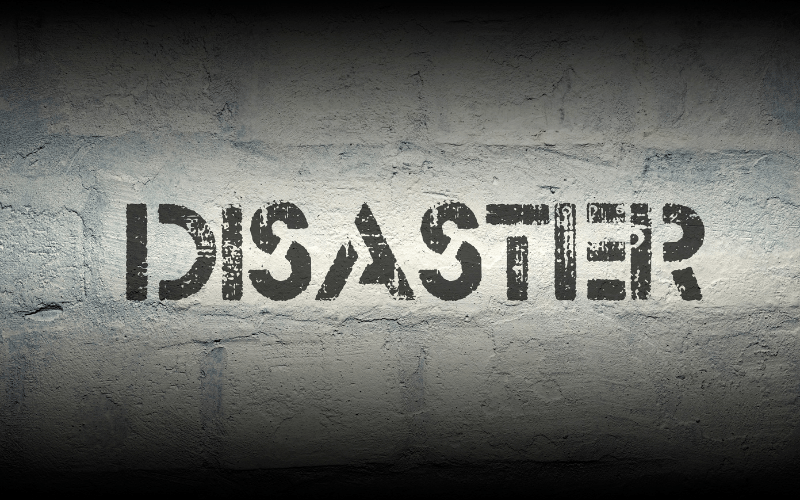Building Your EMDR Therapy Network
Networking is about building community. Networking as an EMDR therapist is about connecting with individuals and organizations around EMDR therapy and the relief it can bring to those dealing with trauma. Building relationships with community contacts who know you are an EMDR therapist will benefit you and them. How can EMDR therapists create effective referral networks?
Be strategic
Marketing is about getting noticed. Networking is creating targeted relationships with people you want to notice you; those who could most benefit from your services and expertise. As an EMDR therapist, you are trained in a high-demand mental health specialty area: trauma. If few EMDR therapists are in your area, simply being EMDR trained may be enough to be sought out for trauma therapy. On the other hand, if there are many trauma therapists in your area, try connecting with targeted organizations that work with trauma survivors. Focus on populations that you feel drawn to – some populations that experience traumatic experiences may be immigrants or refugees, domestic violence survivors, or those experiencing minoritization by race, sexual orientation, or gender identities. Additional populations that experience trauma may be first responders, those struggling with addiction and recovery, those experiencing medical accidents, sickness, or injuries, and vulnerable populations to abuse: children, those with disabilities, and aging adults.
EMDR therapy as adjunct therapy
EMDR therapy is flexible in that it can be utilized both as a primary therapy and adjunctive therapy service (Rydberg & Machado, 2020). Tell other mental health providers untrained in EMDR therapy that you are willing to be part of a therapy team that could help their clients through a traumatic experience with EMDR. As one EMDR therapist put it: “Educating other providers on how EMDR can be helpful with stuck clients as an adjunct therapy helped me when incorporating EMDR into my practice.” When considering adjunctive work, Borstein (2009) and Czyz & Muhlbauer (2015), recommend an open and cooperative relationship between therapists, and a sharing of resources for an accurate assessment of a client’s readiness for EMDR therapy and progress if readiness is determined.
Create a presence
Here’s a tip: when networking, it is important to have a way to leave an impression about yourself and your services as an EMDR therapist. The best resource an EMDRIA member has to advertise their services as an EMDR therapist is to create a profile in the EMDRIA “Find an EMDR Therapist” directory. If you are certified in EMDR therapy, share that information so that others in the mental health field can learn about the EMDR therapist career path. Private practitioners can share their business cards, websites, or their personal brand that speaks to their use of EMDR therapy. Agency clinicians can speak to the important role EMDR therapy plays with that agency’s population.
Other EMDR therapists
Finding support networks of other EMDR therapists to consult with builds confidence and community. Professional EMDR consultation is important, and so is peer-to-peer networking. Networking with other EMDR therapists helps build competence as best practices can be shared between clinicians with more experience and those who have questions about working with specific issues or populations. Peer groups can foster self-care and can promote EMDR continuing education. There are many local and regional groups. EMDRIA members can utilize the EMDRIA Local Connections online community.
The fascination factor
Conversations about EMDR therapy tend to fascinate people outside of the EMDR therapy world. Professionals with referral networks outside the mental health world (like specialty doctor’s offices) may be especially intrigued if they have not heard of EMDR therapy. Visit offices or create other opportunities to interact with these professionals to build your professional network. Have answers prepared to address common questions: What is trauma? Why is treating trauma important? How will this person know they could refer someone to you? What signs in a client may indicate the need for a trauma therapist? How can EMDR therapy help someone? What successes have you seen?
Turn connections into strong relationships
Tend the networking connections you make and nurture those relationships. Respond to referrers with gratitude in a call or thank you note, and touch in periodically with a quick hello and update on your practice. Consider your referral partner’s needs. Reciprocate referral business if the opportunity arises. Build a name as a ‘connector’ by sharing connections with referrers when you notice opportunities to benefit others. The energy you put into a professional relationship reflects your authenticity and commitment to your work as an EMDR therapist.
Networking as an EMDR therapist is all about forming relationships that help build your business or your employer’s business, spreading awareness about EMDR therapy, and working toward a common goal of finding the best trauma treatment for people in your community.
Susanna Kaufman works with content at EMDRIA, spearheading the Focal Point blog and reviewing material while working toward her full LPC licensure in Texas. This post is adapted from a previously written article in Go With That Magazine, 24(3), 2019.
Resources:
Borstein, S. (2009). Brief adjunctive EMDR. Journal of EMDR Practice and Research, 3(3), 198-204. Open access: https://doi.org/10.1891/1933-3196.3.3.198
Czyz, B., & Muhlbauer, C. (2015). EMDR adjunctive therapy at a community agency, treating clients with a spectrum of mental health disorders. Journal of EMDR Practice and Research, 9(1), 35-45. Open access: https://doi.org/10.1891/1933-3196.9.1.35
Rydberg, J. A., & Machado, J. (2020). Integrative psychotherapy and psychotherapy integration: The case of EMDR. European Journal of Trauma & Dissociation, 100165. https://doi.org/10.1016/j.ejtd.2020.100165
Back to Focal Point Blog Homepage
Additional Resources
If you are a therapist interested in the EMDR training:
- Learn more about EMDR at the EMDRIA Library
- Learn more about EMDR Training
- Search for an EMDR Training Provider
- Check out our EMDR Training FAQ
If you are EMDR trained:
- Check out EMDRIA’s Let’s Talk EMDR Podcast
- Check out the EMDRIA blog, Focal Point
- Learn more about EMDRIA membership
- Search for Continuing Education opportunities
If you are an EMDRIA Member:
- Learn more about EMDR Consultation
- Find clinical practice articles in EMDRIA’s Go With That Magazine
- Search for articles in Journal of EMDR Practice and Research in the EMDRIA Library
Date
January 19, 2024
Contributor(s)
Susanna Kaufman
Practice & Methods
Your EMDR Practice





